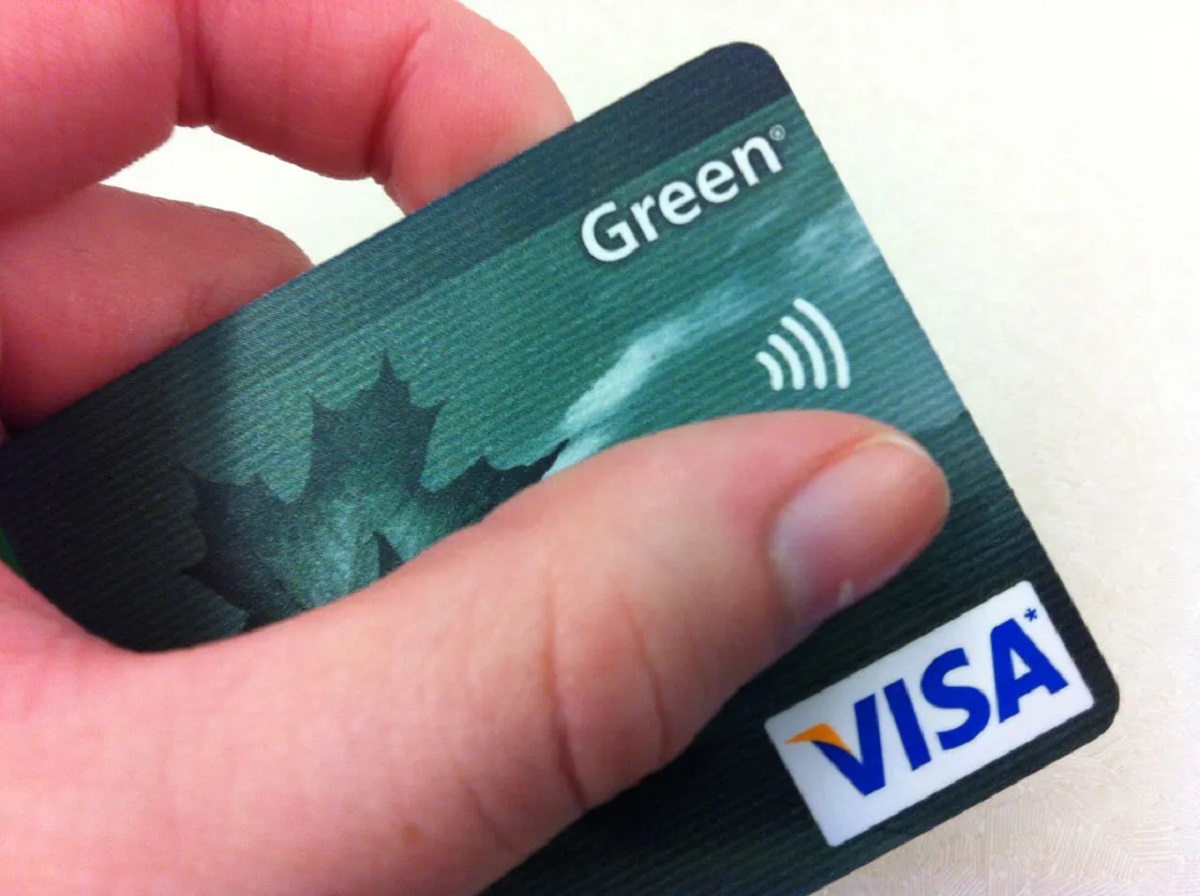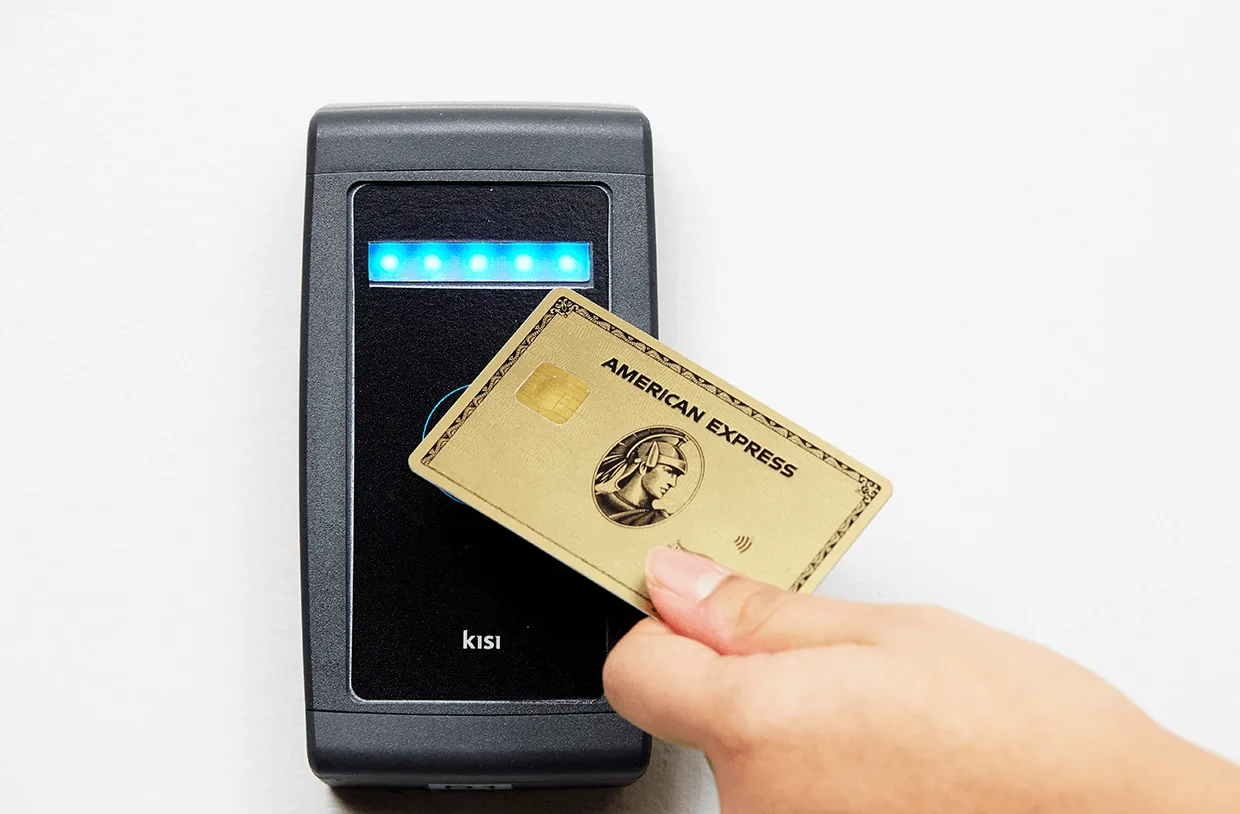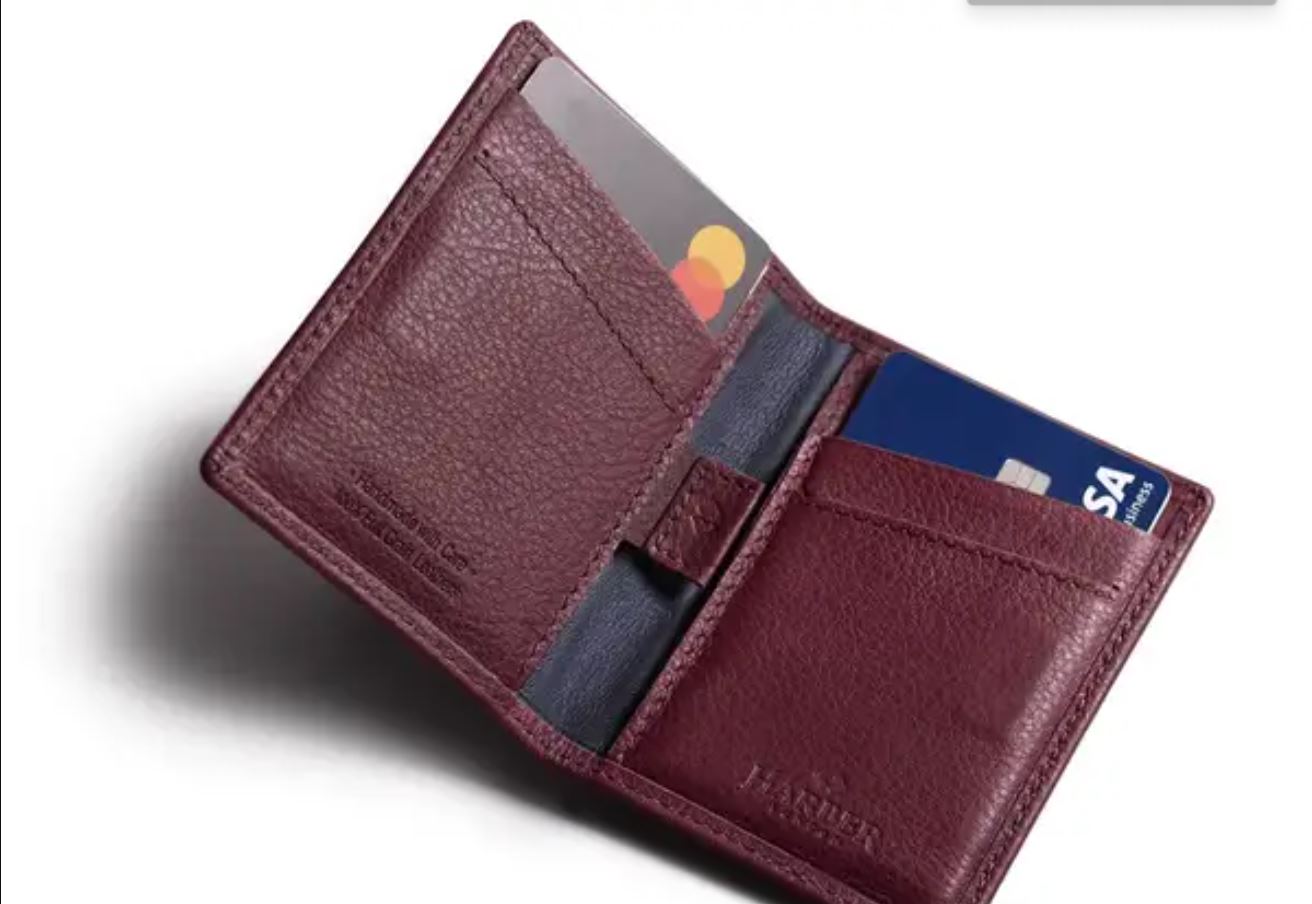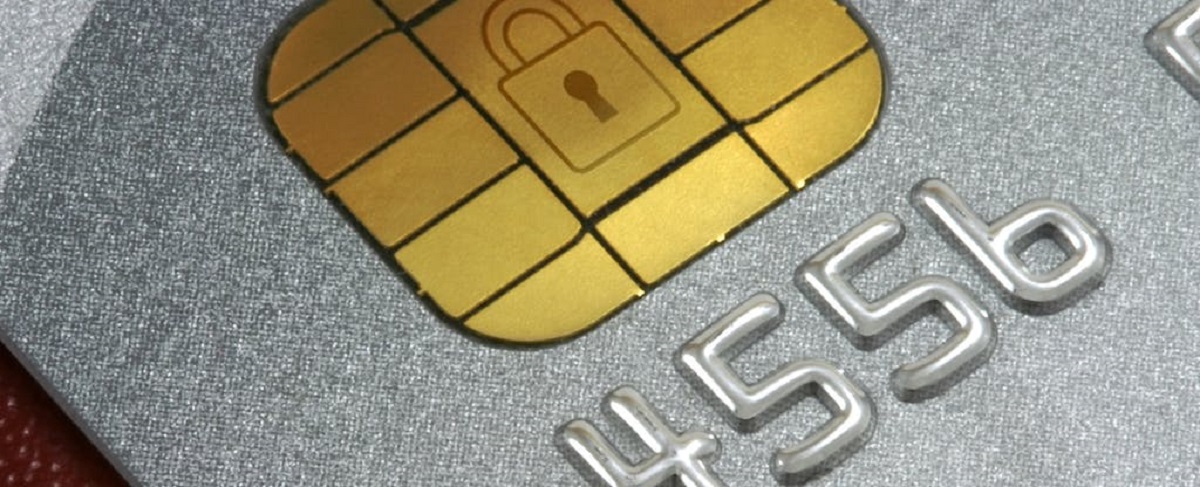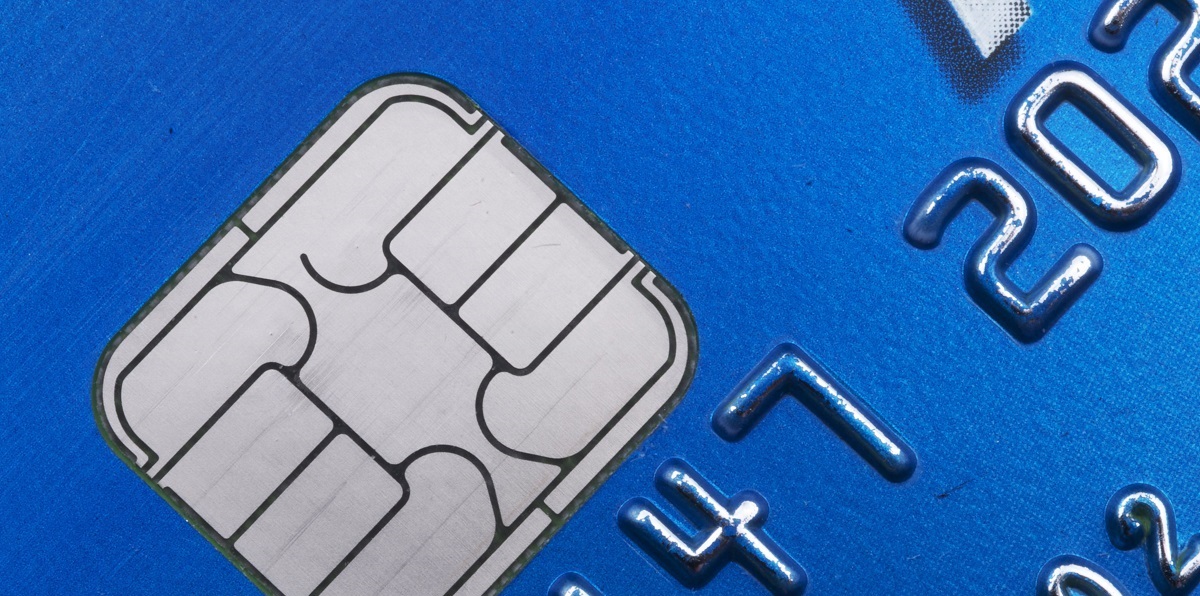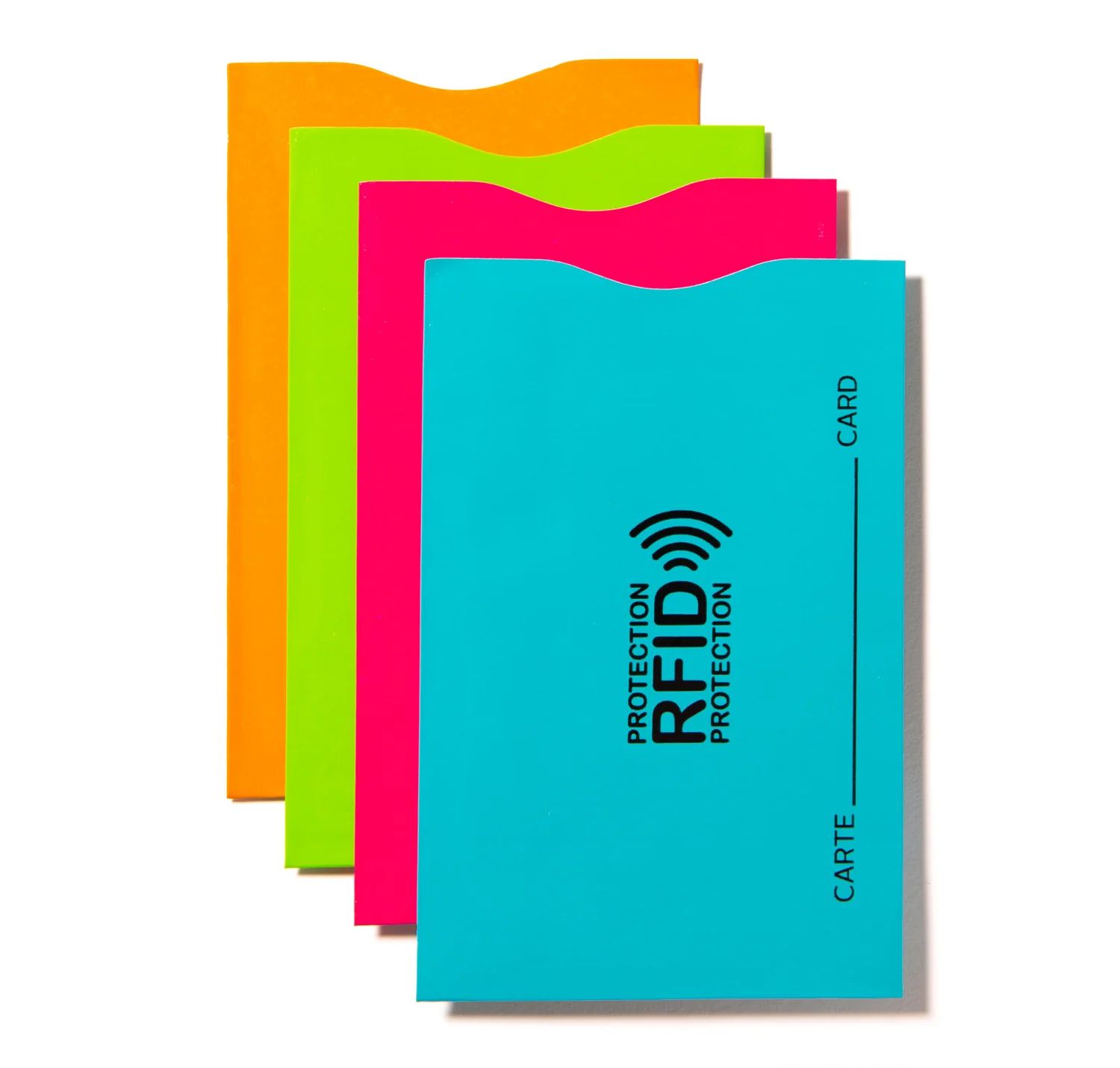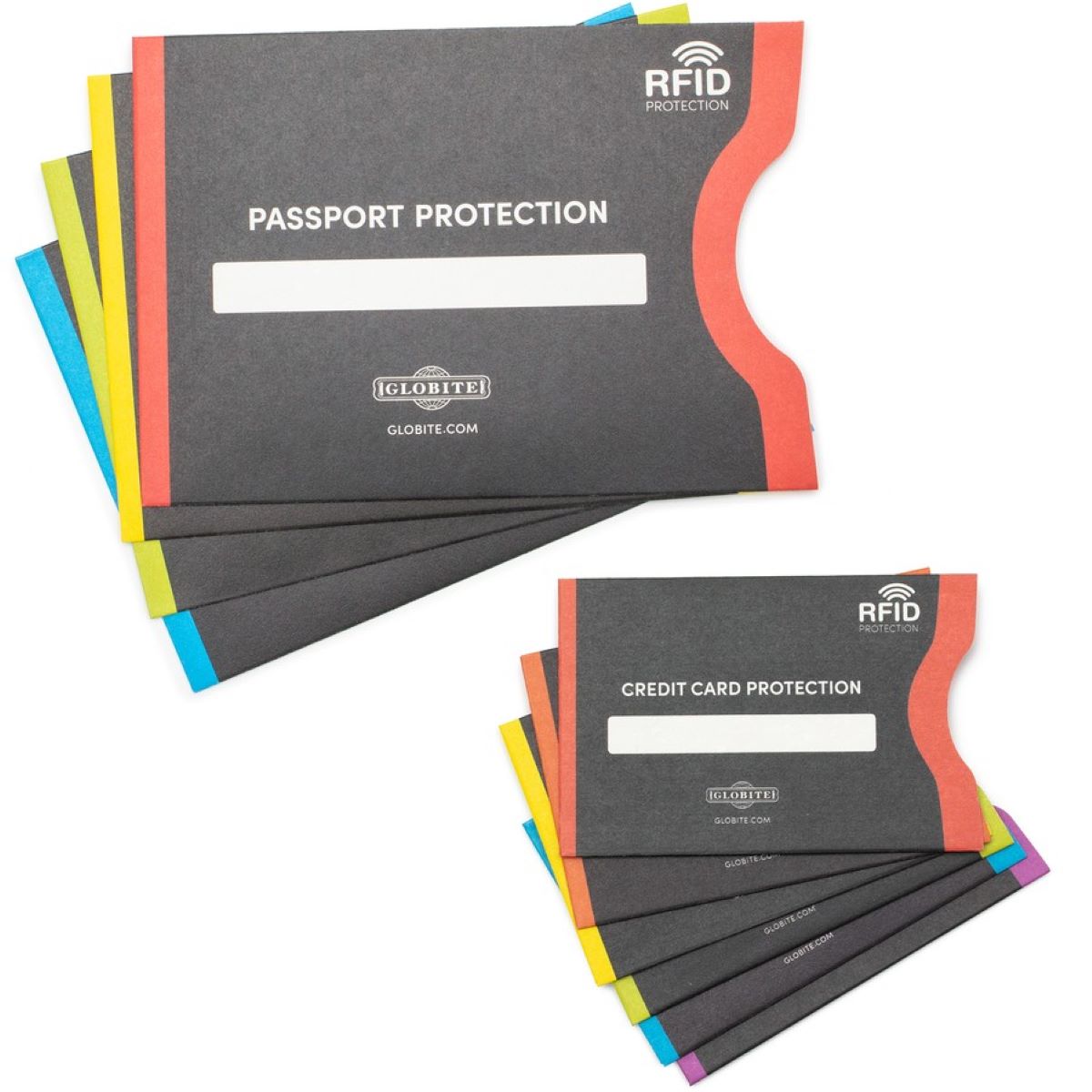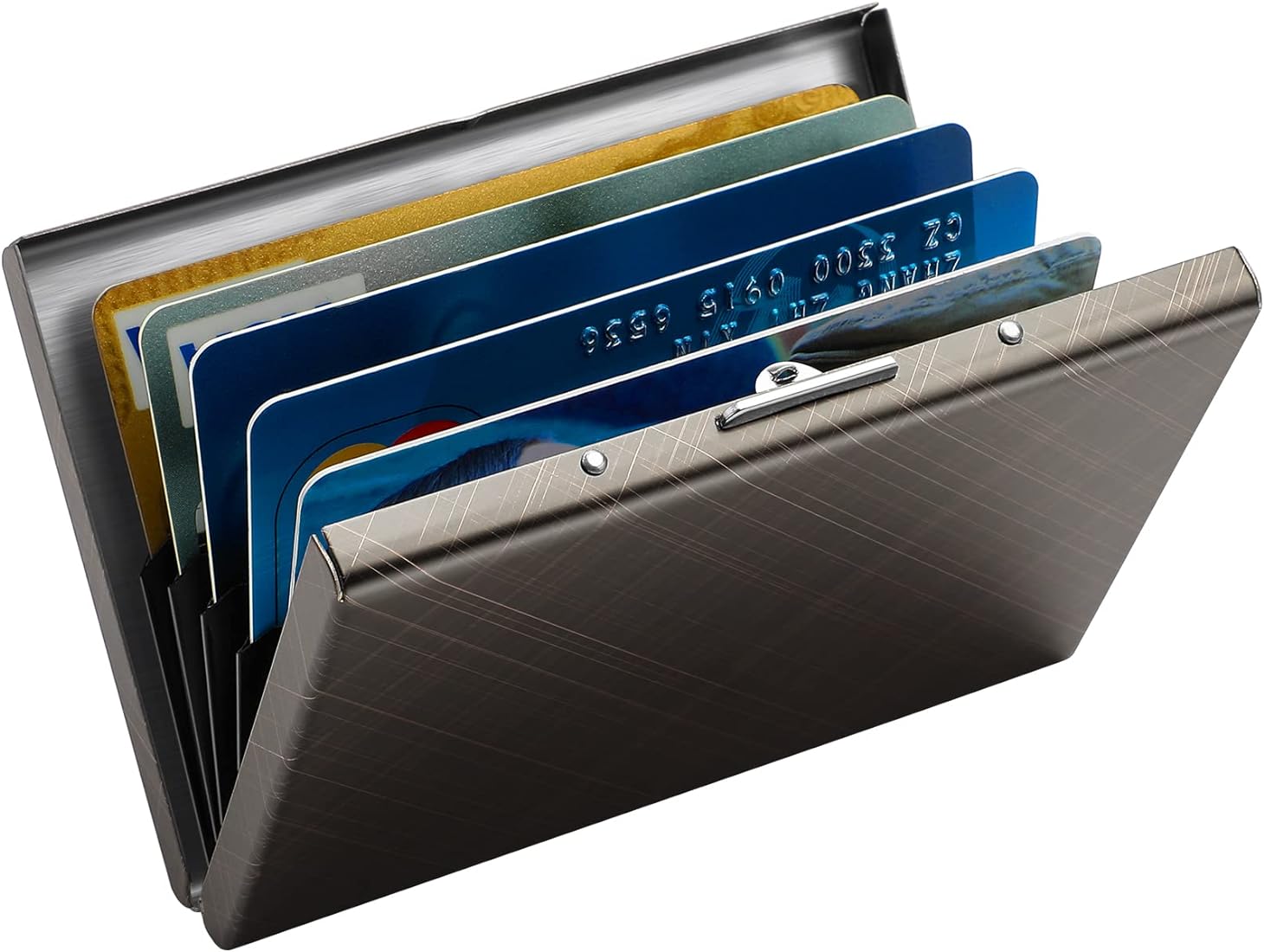Introduction
With the advancement of technology, credit cards have undergone significant changes to improve security and convenience. One such development is the implementation of Radio Frequency Identification (RFID) technology in credit cards. RFID-enabled credit cards allow for contactless payments, allowing users to simply tap or wave their cards instead of swiping or inserting them into a card reader.
While RFID technology offers the convenience of quick and effortless transactions, it has raised concerns about privacy and security. There have been instances of credit card information being skimmed or stolen using RFID readers. As a result, many individuals are interested in determining whether their credit cards have RFID technology embedded in them.
This article will provide a comprehensive guide on how to determine if your credit card has RFID technology. We will explore what RFID is, how RFID credit cards work, and the pros and cons of using RFID credit cards. Additionally, we will highlight various methods you can use to check if your credit card is equipped with RFID technology.
By understanding the presence of RFID in your credit card, you can make informed decisions about protecting your personal and financial information. Whether you are concerned about potential security risks or simply curious about the technology behind your credit card, this article will provide the insights you need.
What is RFID?
Radio Frequency Identification (RFID) is a technology that uses electromagnetic fields to transmit data wirelessly. It involves the use of small electronic tags or labels, commonly known as RFID tags, which contain unique identification information. These tags can be attached to various objects, including credit cards, to enable automatic identification and tracking.
The RFID system consists of two main components: the RFID tag and the RFID reader. The tag, also referred to as a transponder, contains a microchip and an antenna. The microchip stores and processes the unique identification data, while the antenna allows the tag to communicate with the RFID reader. The RFID reader emits radio waves that power the tag and retrieve the information stored within it.
One of the key features of RFID technology is its ability to facilitate contactless communication. Unlike traditional methods, such as barcode scanning or magnetic stripe cards, RFID tags do not require physical contact or a direct line of sight to the reader. This makes RFID ideal for applications that involve quick and convenient transactions, such as credit card payments.
RFID technology is used in various industries and applications, including supply chain management, inventory tracking, access control systems, and, of course, credit card payments. By embedding RFID tags in credit cards, financial institutions aim to provide a seamless and efficient payment experience for cardholders.
It is important to note that RFID technology comes in different frequencies. The most common frequencies used in RFID credit cards are High-Frequency (HF) and Ultra-High-Frequency (UHF). The choice of frequency depends on factors such as the desired communication range and the type of application.
Now that we have a general understanding of RFID technology, let’s delve deeper into how RFID credit cards work and the benefits and drawbacks associated with using them.
How do RFID Credit Cards Work?
RFID credit cards operate through a process known as near-field communication (NFC). NFC allows for short-range wireless communication between an RFID tag in the credit card and an NFC-enabled reader, typically found in payment terminals.
When you tap or wave an RFID credit card near an NFC-enabled reader, the reader generates an electromagnetic field that powers the RFID tag in the card. The tag then sends its unique identification information back to the reader, allowing it to process the payment transaction.
RFID credit cards have a built-in antenna and a microchip that stores the necessary data. The microchip contains information such as the credit card number, cardholder’s name, expiration date, and CVV code. This data is encrypted to ensure secure transmission during the payment process.
The NFC technology used in RFID credit cards operates at a short range, typically less than 4 inches. This limited range is intentional, as it prevents unintended or unauthorized readings of the credit card’s information. The close proximity required for communication adds an extra layer of security compared to traditional magnetic stripe or chip-based cards.
One of the primary benefits of RFID credit cards is the convenience they offer. With a simple tap or wave of the card, you can make contactless payments without the need to insert or swipe the card. This speeds up the payment process, especially in situations where quick transactions are necessary, such as at fast-food restaurants or busy retail stores.
It is important to note that not all credit cards have RFID technology. Some cards may still rely on magnetic stripes or chip-based technology. The presence of RFID in a credit card depends on the issuing bank and the type of card provided to the cardholder.
Now that we understand how RFID credit cards work, let’s explore the advantages and disadvantages of using this technology.
Pros and Cons of RFID Credit Cards
RFID credit cards offer several advantages and disadvantages, which can help you make an informed decision about whether to use them or opt for traditional credit cards. Let’s take a closer look at the pros and cons of RFID credit cards:
Pros:
- Convenience: RFID credit cards allow for quick and contactless payments. With a simple tap or wave, you can complete transactions seamlessly, saving you time and effort.
- Speed: The near-field communication technology used in RFID credit cards enables fast and efficient payment processing. This is particularly beneficial in busy environments where quick transactions are essential.
- Enhanced security: RFID credit cards offer improved security compared to traditional magnetic stripe cards. The close proximity required for communication reduces the risk of skimming or unauthorized data theft.
- Reduced wear and tear: Since RFID credit cards do not require physical contact with payment terminals, there is less wear and tear on the card’s chip or magnetic stripe, resulting in a longer lifespan.
Cons:
- Potential security risks: While RFID credit cards offer enhanced security, there is still a small risk of unauthorized scanning or data theft. However, the likelihood of such incidents occurring is relatively low.
- Limited acceptance: Not all payment terminals are equipped with NFC technology, which means there may be instances where RFID credit cards cannot be used. It’s crucial to ensure that the places you frequently visit accept contactless payments.
- Higher cost: Compared to traditional credit cards, RFID-enabled cards may have a slightly higher cost due to the inclusion of the RFID technology. However, this cost difference is usually negligible.
- Privacy concerns: Some individuals have privacy concerns related to RFID credit cards. Since they can be read remotely, albeit at a short distance, there is a perception that personal information may be at risk. However, encryption measures and security protocols are in place to protect cardholders’ data.
As with any technology, RFID credit cards have their advantages and disadvantages. It ultimately comes down to personal preference and the level of importance you place on convenience, speed, and security factors.
Now that we have explored the pros and cons of RFID credit cards, let’s move on to the methods you can use to determine if your credit card has RFID technology.
How to Check if Your Credit Card Has RFID Technology
If you’re unsure whether your credit card has RFID technology, there are a few methods you can use to check. Here are four common techniques you can employ:
Method 1: Visual Inspection
A simple way to check if your credit card has RFID technology is to visually inspect it. Look for the presence of a symbol on the card that indicates RFID capabilities. The symbol often resembles a series of curved or wavy lines, representing radio waves. Common symbols used include “PayPass,” “PayWave,” or “Blink.” If you see any of these symbols on your card, it likely contains RFID technology.
Method 2: Performing the “Tap” Test
Another method is to perform a quick “tap” test. Hold your credit card near or against an NFC-enabled payment terminal without actually making a payment. If the terminal detects your card and displays a message or light indicating that it is read, then your card is likely RFID-enabled.
Method 3: Using an RFID Blocking Sleeve or Wallet
If you want a more definitive answer, you can use an RFID blocking sleeve or wallet. These products are designed to prevent RFID scanners from reading your credit card information. Insert your credit card into the blocking sleeve or place it in the wallet’s designated RFID blocking compartment. If the card no longer triggers an NFC reader when tapped or waved, it suggests that it has RFID technology.
Method 4: Contact Your Credit Card Issuer
If you are still unsure after performing the previous methods, the best course of action is to contact your credit card issuer directly. Call the customer service number provided on the back of your card and inquire whether your card is RFID-enabled. The customer service representative should be able to provide you with the necessary information.
By utilizing these methods, you can determine whether your credit card has RFID technology. Knowing this information will enable you to take appropriate measures to protect your information and understand the capabilities of your card.
Method 1: Visual Inspection
One of the easiest ways to check if your credit card has RFID technology is through a visual inspection. Many RFID-enabled credit cards feature a distinct symbol on the card that indicates its capabilities.
When examining your credit card, look for symbols such as “PayPass,” “PayWave,” or “Blink.” These symbols typically consist of curved or wavy lines, representing radio waves. They may be located on the front or back of the card, often near the card network logo, such as Visa or Mastercard.
If you spot any of these symbols on your card, it is highly likely that your credit card contains RFID technology. These symbols serve as a visual indicator that your card can be used for contactless payments, allowing for quick and convenient transactions.
Keep in mind that not all RFID-enabled credit cards may display these symbols. Some issuers choose not to include them or use different variations of the symbol. Therefore, it’s essential to familiarize yourself with the symbols used by your credit card provider.
If there is no visible symbol on your card, it does not necessarily mean it lacks RFID technology. Some issuers opt for a more discreet or understated design without explicitly indicating the presence of RFID. In such cases, it is advisable to use additional methods to verify whether your card has RFID capabilities.
Performing a visual inspection is a quick and straightforward way to identify RFID technology in your credit card. If you spot the relevant symbols, it signifies that your card is likely RFID-enabled, allowing for convenient contactless payments.
Now that we have explored the visual inspection method, let’s move on to the next method: performing the “Tap” test.
Method 2: Performing the “Tap” Test
The “Tap” test is a practical method to verify if your credit card has RFID technology. This method involves attempting to make a payment using your credit card without actually completing the transaction.
To perform the “Tap” test, find an NFC-enabled payment terminal, typically found at retail stores, restaurants, or other establishments that accept contactless payments. Hold your credit card near or against the payment terminal, as if you were about to make a payment.
If your credit card has RFID technology, the NFC-enabled payment terminal will detect the card when it is in close proximity. The terminal may display a message or light indicator indicating that it has recognized the card.
It’s important to note that you should not complete the transaction during this test. Simply observe if the payment terminal reacts to your credit card. If you receive a response from the terminal, it suggests that your credit card has RFID technology.
Keep in mind that the “Tap” test may not work in all situations. Some payment terminals require the transaction to be initiated by the merchant or customer, preventing accidental detections during the test. Additionally, the success of the test may depend on the specific technology used by the payment terminal and the compatibility of your credit card.
The “Tap” test is a useful method to confirm the presence of RFID technology in your credit card. If the payment terminal reacts to your card during the test, it indicates that your credit card is RFID-enabled, allowing for contactless payments.
Now that we have covered the “Tap” test, let’s move on to the next method: using an RFID blocking sleeve or wallet.
Method 3: Using an RFID Blocking Sleeve or Wallet
An effective method to determine if your credit card has RFID technology is by using an RFID blocking sleeve or wallet. These accessories are specifically designed to protect your credit card information from unauthorized scanning or skimming.
To utilize this method, you will need an RFID blocking sleeve or a wallet with RFID-blocking capabilities. These products contain a special material that creates a Faraday cage, blocking the radio waves used in RFID communication from reaching your credit card.
Here’s how you can use an RFID blocking sleeve or wallet to check if your credit card has RFID technology:
- Remove your credit card from your regular wallet or purse.
- Insert the credit card into the RFID blocking sleeve or place it in the designated RFID-blocking compartment of the wallet.
- With the credit card securely enclosed in the blocking sleeve or wallet, attempt to make a payment using a contactless payment terminal.
- If the payment terminal does not detect your credit card and the transaction cannot be completed, it indicates that your credit card has RFID technology.
The RFID blocking sleeve or wallet effectively blocks the RFID signal, preventing the payment terminal from reading your credit card’s information. If the card no longer triggers an NFC reader when tapped or waved, it suggests that it has RFID technology.
Keep in mind that the card must be fully enclosed within the RFID blocking sleeve or wallet for this method to work accurately. Ensure that the card is not exposed to other unintended sources of radio waves during the test.
Using an RFID blocking sleeve or wallet is a reliable method to detect if your credit card has RFID technology. If the card no longer triggers an NFC reader when placed inside the sleeve or wallet, it indicates that your credit card is RFID-enabled.
Now that we have explored the RFID blocking sleeve or wallet method, let’s move on to the final method: contacting your credit card issuer.
Method 4: Contact Your Credit Card Issuer
If you are still unsure about whether your credit card has RFID technology after trying the previous methods, contacting your credit card issuer directly is an effective way to get a definitive answer.
Look for the customer service phone number provided on the back of your credit card or visit your credit card issuer’s website to find the appropriate contact information. Reach out to their customer service department and inquire about whether your credit card incorporates RFID technology.
The customer service representative will have access to the necessary information and can inform you if your card is RFID-enabled. They may also be able to provide details about the specific features and capabilities of your credit card.
When contacting your credit card issuer, be prepared to provide your account details and answer any security questions they may have to verify your identity. This ensures that they can provide accurate information about your specific credit card.
Speaking directly with your credit card issuer is useful not only for determining if your card has RFID technology but also for addressing any other questions or concerns you may have about your credit card. They can provide additional guidance on how to use your card effectively and securely.
Keep in mind that response times may vary depending on your credit card issuer’s customer service availability and protocols. It may take some time to get a definitive answer, so be patient and allow for any necessary follow-up communication.
Contacting your credit card issuer is a reliable method to obtain information about your credit card’s features, including the presence of RFID technology. By speaking directly with the issuer, you can ensure accurate and up-to-date information about your specific card.
Now that we have explored the four methods to check if your credit card has RFID technology, you can gain a better understanding of whether your card is equipped with this contactless payment capability.
Conclusion
Discovering if your credit card has RFID technology is essential in today’s digital age. The convenience and speed offered by RFID-enabled credit cards can revolutionize the way we make payments. However, it is also important to be aware of the potential security risks and privacy concerns associated with this technology.
In this article, we explored four methods to check if your credit card has RFID technology:
- Visual Inspection: Look for symbols like “PayPass,” “PayWave,” or “Blink” on the card.
- Performing the “Tap” Test: Hold the card near an NFC-enabled payment terminal to see if it triggers a response without completing a transaction.
- Using an RFID Blocking Sleeve or Wallet: Insert the card into an RFID blocking sleeve or wallet and see if it prevents contactless payment terminals from reading it.
- Contacting Your Credit Card Issuer: Reach out to your credit card issuer’s customer service to inquire if your card has RFID technology.
By utilizing these methods, you can determine if your credit card has RFID technology and make informed decisions to protect your personal and financial information.
Remember that while RFID credit cards offer convenience and efficiency, they also have potential drawbacks. It is crucial to weigh the pros and cons and decide if an RFID-enabled credit card aligns with your personal preferences and security concerns.
Additionally, stay vigilant in protecting your credit card information. Regularly monitor your credit card statements for any suspicious activity, keep your card secure, and take advantage of features like RFID blocking sleeves or wallets to enhance protection.
If you have any doubts or questions about your credit card’s features, always reach out to your credit card issuer for clarification. They are the best resource to provide accurate and specific information regarding your card.
With the information gained from this article, you can confidently navigate the world of RFID credit cards and make informed decisions about your payment methods.







